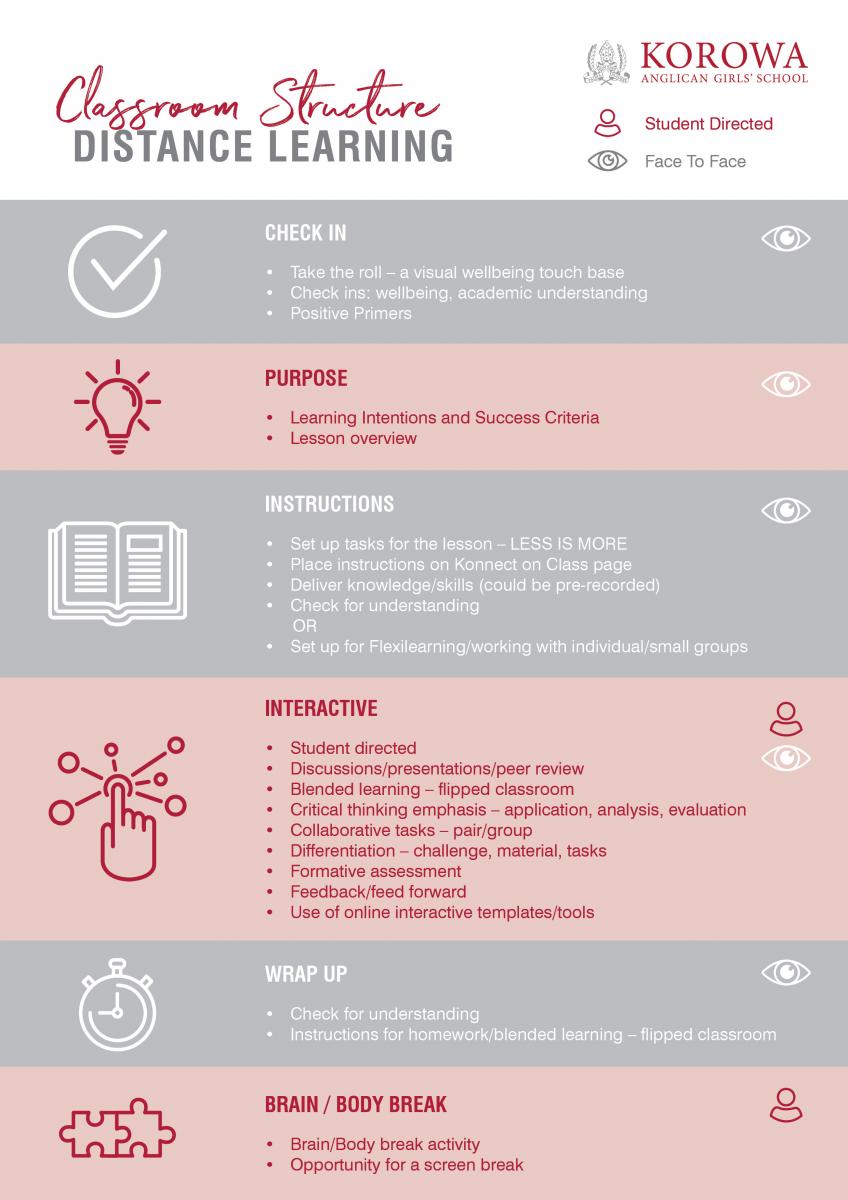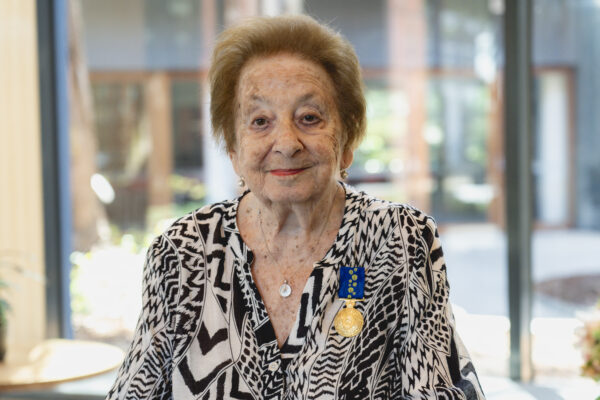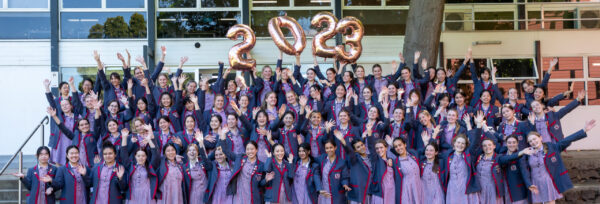
At the beginning of 2020 we could never have imagined what was ahead of us and how we would have to adapt our lives to ensure the health and safety of our community. The advent of the Coronavirus Pandemic, has changed the way we live and resulted in a seismic shift in the delivery of education. At Korowa Anglican Girls’ School, we quickly learnt to pivot and navigate the distance learning landscape. Our teachers tackled the challenge of rapidly upskilling in the field of using the Microsoft Teams conferencing tool for lesson delivery, pre-recording film clips of knowledge and skills, and engaging with a plethora of online interactive tools. Suddenly, the conversations in staff rooms centred around ‘how do you embed images and text in the Teams whiteboard app?’ and ‘how do you set up channels for class groups to collaborate?’
Understanding what an online lesson could look like led us to draw upon online learning research, tools, webinars, and expertise of authorities such as Gilly Salmon’s 5 stage model (with its framework to build confidence and capability in online learning) and sage advice from experts in this field such as Judith V Boettcher and Rita Marie Conrad.
Acknowledging the challenges students would face while distance learning and the importance of maintaining a structured school day, we incorporated wellbeing strategies and routines as a regular feature of a lesson to ensure students were well supported, particularly as they transitioned to this new way of learning.
Teachers were also well supported with an array of ready to use interactive templates and tools to assist with lesson delivery and supporting students. In essence, the traditional classroom delivery cannot simply transfer to an online space. This way of teaching and learning requires greater attention to student directed activity, engagement, interactivity, collaboration and motivation. Equipped with a stronger understanding of synchronous (face to face learning that can occur in real time) and asynchronous learning (student directed learning that doesn’t require face to face interaction), and blended learning we established a structure to guide teachers in developing an effective lesson.
Check in
First and foremost, every lesson should have a clear structure with initial check ins to allow staff to visibly ascertain the wellbeing of every individual student while conducting an initial quick formative assessment (e.g. quiz) or a quick positive primer.
Purpose
Learning Intentions and Success Criteria accompanied by a brief overview of the lesson, establish the purpose, direction and goals to accomplish by students.
Instructions
For any teacher who is delivering online learning, it becomes very clear that it can take a lot longer to get through class material and tasks online. To avoid cognitive overload, less is more. Instructions, knowledge and skill demonstration can be pre-recorded to allow students to also view later at their own pace. Research indicates a maximum of 15 minutes for any one recording. A lesson could be devoted to Flexilearning (an array of additional tasks, readings, challenges) which also allows teachers to work with individuals/small groups.
Interactive
Learning needs to have a variety of shorts tasks that are interactive, student directed and highly collaborative.
Rita Marie Conrad co-author of ‘The Online Teaching Survival Guide: Simple and Practical Pedagogical Tips ‘suggests a lesson…should mix spurts of discussions, collaboration, video and audio clips, and hands-on exercises with text and possibly brief video lectures’ (O’Malley, 2017). Ron Ritchart provides some excellent guidance for using thinking routines online and has links to some excellent resources.
Blended learning in which the classroom is flipped by students undertaking readings, viewings and associated tasks which can then lead to rich discussion and/or application in the next lesson. Emphasis is placed on the higher range of critical thinking skills – our staff are working with an array of interactive thinking routine templates. Flipgrid, a short video tool has proven popular as it allows students to film short visual responses to present in class.
Collaboration in activities is key for social connectedness and building confidence in sharing ideas. This can enable the building of student independence by handing control over to students to lead discussions, research and deliver presentations about the learning. While students work at their own pace through tasks to master skills, Microsoft Teams allows students to be placed in individual and small group channels in a class where they can receive support and feedback from the teacher.
Wrap Up
This touch point allows a conclusion to the lesson while checking of understanding, addressing any gaps and setting up homework or flipped classroom tasks.
Brain / Body breaks
Take breaks to transition to the next lesson and to take a screen break, the last 5 mins are devoted to selecting a physical activity.
We are living through unprecedented times and our ability to adapt and change quickly has certainly been tested over the past weeks. We are incredibly proud of the way staff have embraced the changes and developed new skills to ensure we can continue to deliver the curriculum to students and support them. We are equally proud of our students who have shown great resilience and courage in embracing this new way of learning and all it has to offer.
With the return date to face to face classes still uncertain we continue to seek feedback from staff, students and families supporting students as well as work with other schools to share ideas on how we can ourselves continue to learn and improve. This online territory has the potential to radically change the eduscape as we know it and could greatly influence and enhance the delivery of ongoing learning.
Sources of information/resources:
O’Malley, Sharon (July 12 2017) Effective Teaching Online, https://www.insidehighered.com/digital-learning/article/2017/07/12/7-guidelines-effective-teaching-online (accessed 2 April 2020)
Boettcher, Judith V, Conrad, Rita-Marie (Sept 2016), The Online Teaching Survival Guide: Simple and Practical Pedagogical Tips, 2nd Edition
Berg, Richard, Brand, Ann PhD, Grant, Jennifer PhD, Kirk, John S PhD, Zimmerman, Todd, PhD (2014) Leveraging Recorded Mini-Lectures to Increase Student Learning, Online Classroom (accessed 2 April 2020)
Ritchart, Ron (April 6, 2020) Using Thinking Routines with Distance Learning https://www.ronritchhart.com/blog/blog-post-four-krf7w-baser (accessed 8 April, 2020)
Salmon, Gilly website https://www.gillysalmon.com/five-stage-model.html (accessed 2 April 2020)



